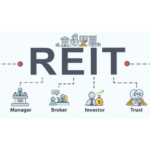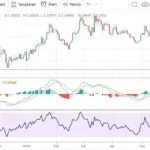Investing is one of the best ways to build wealth and achieve financial independence. However, every investment comes with risk — the possibility of losing money. While you can’t eliminate risk completely, you can manage it effectively. For new investors, understanding how to identify, measure, and reduce risk is the foundation of long-term success.
What Is Risk Management in Investing?
Risk management is the process of recognizing potential financial losses and taking steps to minimize their impact. It helps investors make smarter decisions, stay calm during market volatility, and protect their investment portfolios from major downturns.
In simple terms:
Risk management is not about avoiding losses — it’s about preparing for them.
1. Understand Different Types of Investment Risks
Before you can manage risk, you need to understand what types of risks exist. Here are some of the most common ones:
- Market Risk: The chance that your investments will lose value due to changes in the overall market. For example, during economic recessions, stock prices often fall.
- Inflation Risk: The risk that rising prices will reduce the purchasing power of your money and investment returns.
- Credit Risk: The possibility that a bond issuer or borrower might fail to repay what they owe.
- Liquidity Risk: The risk that you won’t be able to sell your investment quickly without losing money.
- Currency Risk: For investors in foreign assets, changes in exchange rates can affect returns.
Knowing these risks helps you plan and choose investments that match your comfort level and financial goals.
2. Know Your Risk Tolerance
Every investor is different. Some people can handle market ups and downs without stress, while others prefer safer investments.
Ask yourself:
- How would I feel if my investment dropped by 10%, 20%, or even 30%?
- Am I investing for short-term goals (1–3 years) or long-term ones (10+ years)?
Your risk tolerance depends on factors like age, income, experience, and personality. Generally:
- Younger investors can afford to take more risk since they have time to recover from losses.
- Older investors or those nearing retirement often prefer lower-risk investments to protect their savings.
3. Diversify Your Portfolio
Diversification is one of the most effective ways to reduce risk. It means spreading your investments across different asset classes, industries, and regions so that a loss in one area doesn’t wipe out your entire portfolio.
For example:
- Instead of investing all your money in tech stocks, mix it with bonds, real estate, or international funds.
- Within stocks, invest across sectors — like healthcare, finance, and consumer goods.
Think of diversification as a financial safety net: it doesn’t remove risk, but it makes your portfolio more resilient.
4. Set Realistic Goals and Expectations
Many new investors take unnecessary risks because they chase quick profits. But investing is a long-term game.
Set clear, achievable goals — such as saving for retirement, buying a home, or building passive income. Then, choose investments that align with your timeline and tolerance for risk.
Remember: slow and steady growth beats short-term speculation.
5. Use Stop-Loss Orders and Emergency Funds
A stop-loss order automatically sells an investment if it falls to a certain price. It’s a simple way to limit losses and protect your capital during sudden market drops.
Also, always keep an emergency fund — typically 3 to 6 months of living expenses — separate from your investments. This safety cushion prevents you from having to sell investments at a bad time if you face unexpected expenses.
6. Regularly Review and Rebalance Your Portfolio
Markets change, and so should your portfolio. Over time, some investments may grow faster than others, shifting your balance of risk.
For example, if stocks outperform bonds, your portfolio may become riskier than you intended. Rebalancing — selling some high-performing assets and buying more of others — keeps your portfolio aligned with your goals and risk level.
7. Keep Emotions in Check
One of the biggest risks for new investors isn’t the market — it’s emotion. Fear and greed can lead to poor decisions like panic-selling during downturns or chasing hype investments.
To manage emotional risk:
- Stick to your plan, even during market volatility.
- Avoid reacting to short-term news or social media trends.
- Focus on your long-term goals, not daily fluctuations.
A disciplined mindset is the best defense against emotional mistakes.
Conclusion
Risk is an inevitable part of investing — but it doesn’t have to be scary. By understanding your risk tolerance, diversifying your portfolio, and staying disciplined, you can protect your investments and build wealth steadily over time.
The key is balance: take enough risk to grow, but not so much that you lose sleep at night. With proper risk management, even new investors can invest with confidence and turn uncertainty into opportunity. 💡














